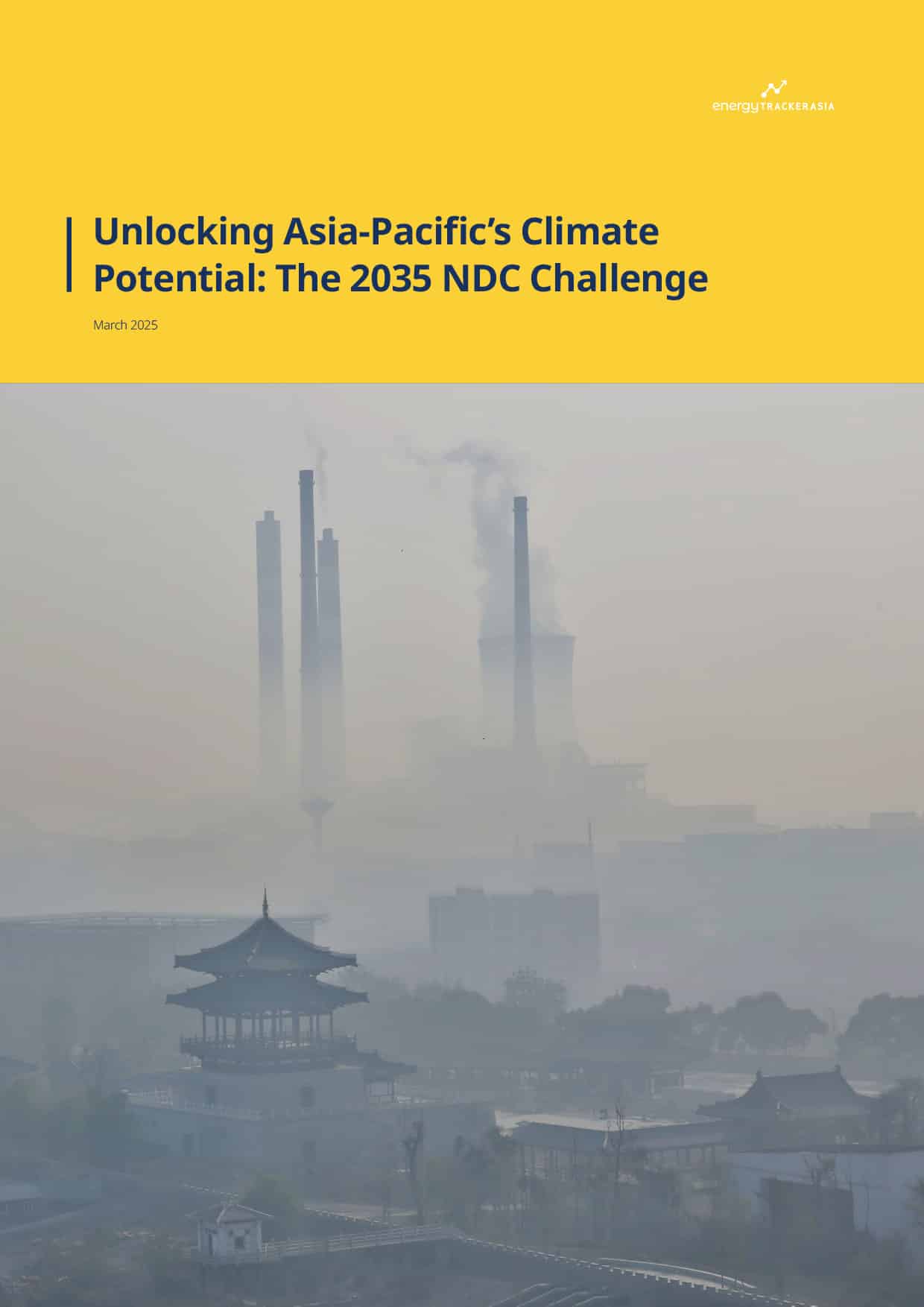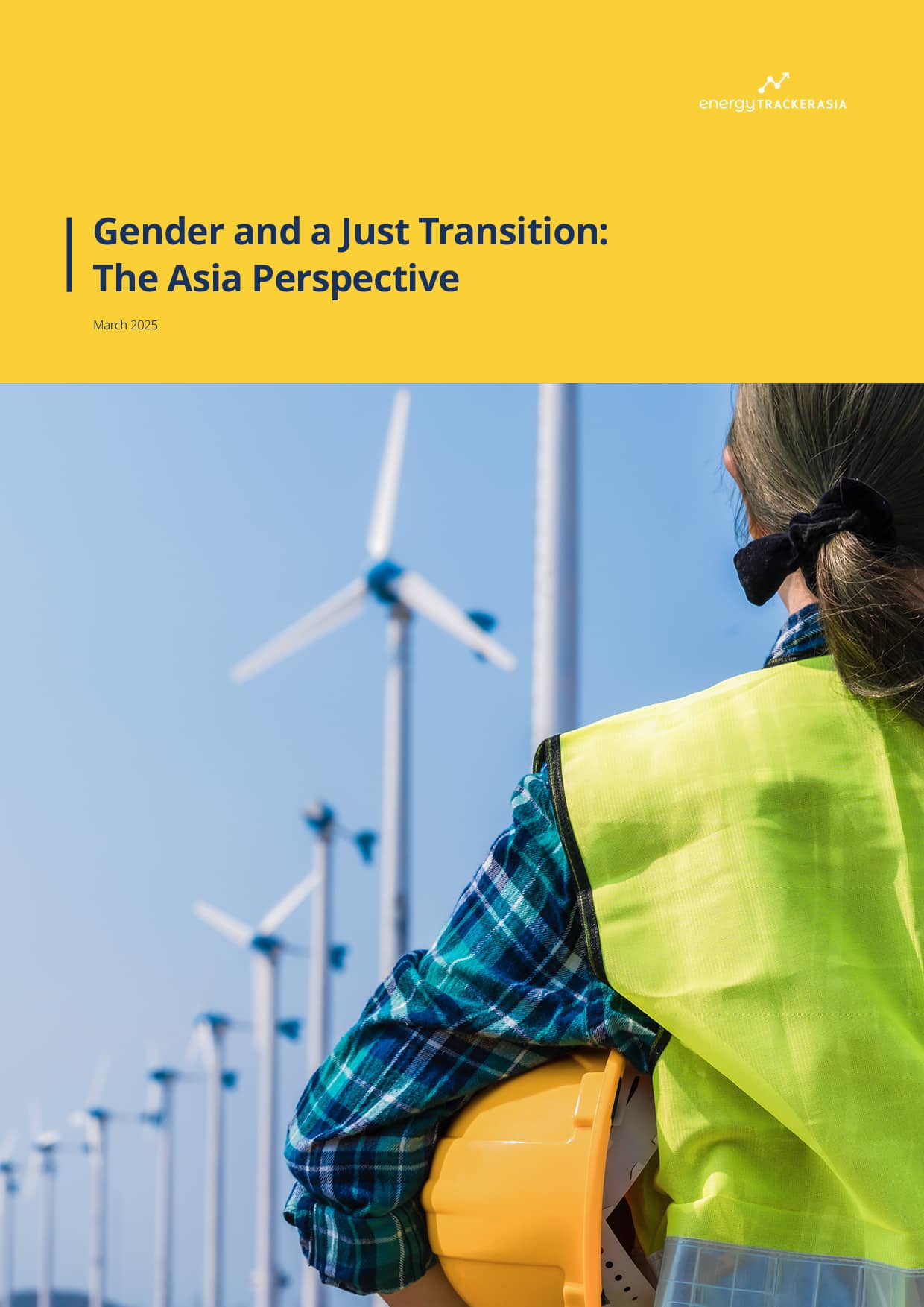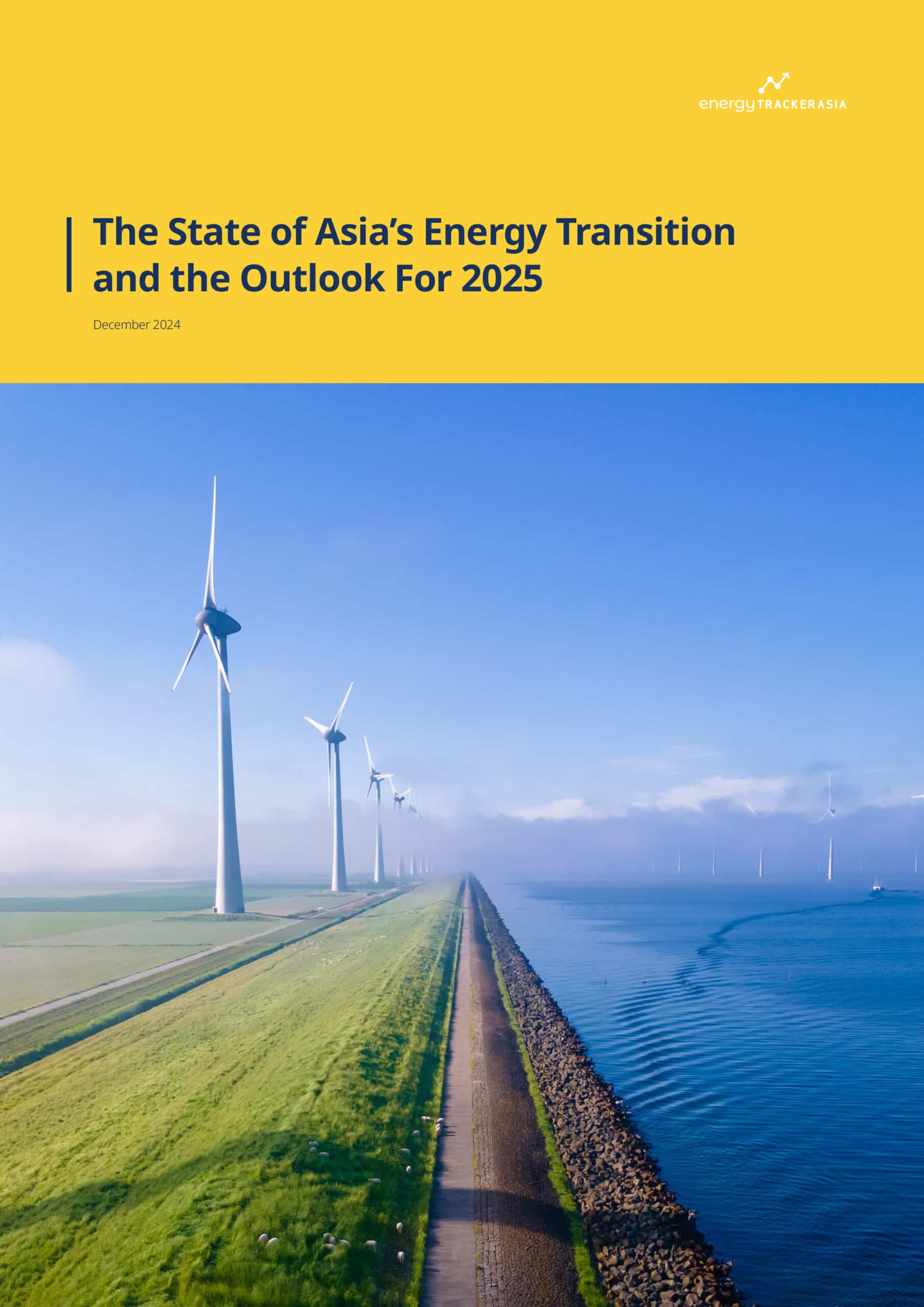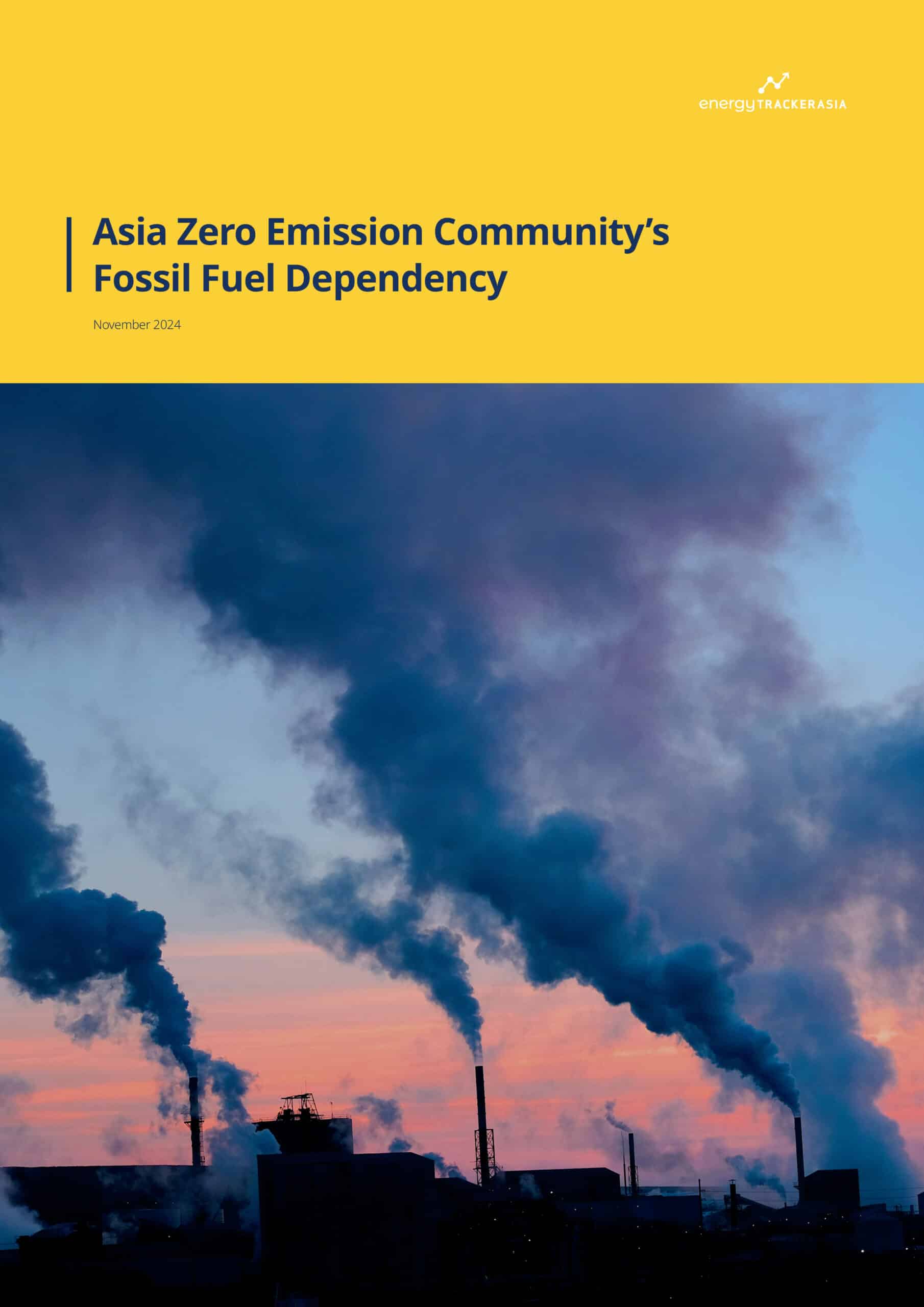The Global Plastics Treaty and Its Importance to End Plastic Pollution
07 April 2025 – by Viktor Tachev
“Today marks a triumph by planet Earth over single-use plastics. This is the most significant environmental multilateral deal since the Paris accord,” said Inger Andersen, executive director of UNEP, during the 2022 meeting that kicked off the work on the Global Plastics Treaty. Delegates aimed to enforce the mechanism during last year’s meeting in Busan, South Korea. However, fossil fuel culprits like Saudi Arabia, Russia and Iran blocked the process, mainly due to efforts to derail the introduction of plastic production restrictions. While the negotiations remain at a stalemate, the plastic pollution problem continues to worsen, with its worst implications felt in Asia.
The Global Plastics Treaty: What It Is and the Progress to Date
In 2022, at a meeting in Nairobi, Kenya, 175 countries agreed to form a global legally binding treaty to tackle plastic pollution and irresponsible waste management, as well as improve plastic production and design. Delegates agreed on an accelerated timeline so the treaty could come into force as soon as 2025.
After several rounds of discussions, negotiations on the Global Plastics Treaty were expected to conclude in December 2024 at a special meeting in Busan, South Korea. Over 100 nations, known as the High Ambition Coalition, supported a draft to cut the 400 million tonnes of plastic produced annually and phase out certain chemicals and single-use plastics. The group said they would not accept a treaty without binding global bans and phaseouts on harmful plastic products and chemicals of concern.
Still, in the end, Saudi Arabia, Iran and Russia, which have been continuously hindering progress on climate change, obstructed the deal. There were also accusations against the US for rebuffing proposals to take meaningful action.
Another round of discussions is scheduled for Aug. 5-14 in Geneva, Switzerland. However, it remains unclear if the High Ambition Coalition will manage to get the deal signed or if negotiations will again succumb to the petrostates’ demands.
According to estimates by the UN, reaching an agreement to shift to a circular economy can open up huge opportunities. For example, it can reduce the volume of plastics entering oceans by over 80% by 2040. Furthermore, it can slash virgin plastic production by 55% and reduce GHG emissions by 25%. There is an economic incentive, too, with estimations revealing that shrinking plastic production can yield USD 70 billion in savings by 2040 and create over 700,000 additional jobs, mainly across developing countries in the Global South.
Why Is a Global Plastics Treaty So Important
To date, we have produced over 8 billion tonnes of plastic, with just 9% recycled. Around half of the manufactured plastic is single-use, including PET bottles (500 billion per year) and plastic bags (5 trillion per year). According to the UNEP, this results in about 400 million tonnes of plastic waste annually.
The Ocean Cleanup estimates that 38 kg of plastic waste enters oceans every second. Around 75-199 million tonnes of plastic floats in our waters, making up over 80% of all marine pollution. Without urgently shifting to more responsible plastics production, use and disposal practices, plastic waste entering aquatic ecosystems could nearly triple to a projected 23-37 million tonnes per year by 2040, compared to 2016.
The OECD estimates that without action, annual plastics production, use and waste generation will increase by 70% in 2040 compared to 2020.
While plastic consumption will increase everywhere, the biggest growth will be in Asia. Scientists predict that China will see the largest consumption by 2050 (235 million tonnes per year in 2050), while India will have the fastest growth rate of plastic use until 2050.
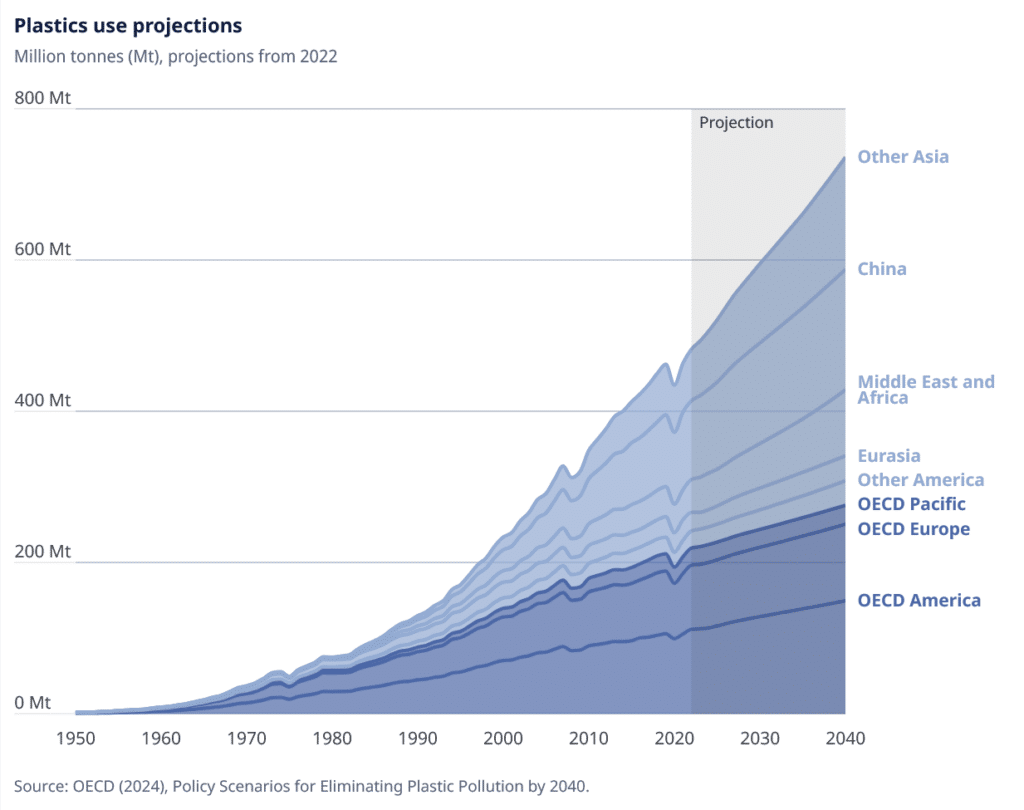
Furthermore, Asia faces the biggest plastic pollution problem globally. A study by Dutch and German scientists finds that nine out of the top 10 biggest ocean plastic waste polluters are in Asia. The Philippines tops the charts with over 36% of the global plastic waste emitted to the ocean. India and China have been found to be the leaders in mismanaging plastic waste.
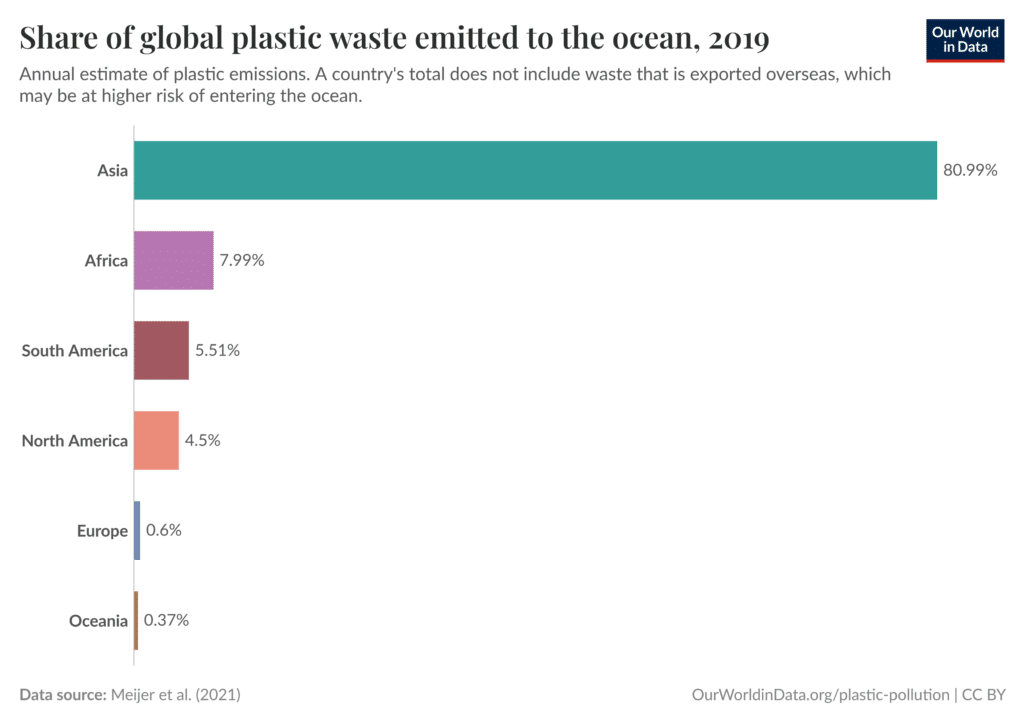
According to a study by scientists from the University of Leeds, six of the top 10 global plastic pollution hotspots are in Asia. The World Bank finds that just 5% of the total plastic waste generated in South Asia is recycled.
The Impacts of Plastic Pollution on Human Health, Wildlife and the Environment
Plastic waste can take up to 500 years to decompose. Even then, it might not disappear entirely but just get smaller, turning into what is known as microplastics. Over a lifetime, the average person consumes around 20 kg of microplastic.
According to scientists, exposure to plastics and microplastics can cause various health problems in humans related to fertility, hormonal, metabolic and neurological functions. Furthermore, plastic pollution kills millions of animals every year — from birds to marine wildlife and land-based species. Research reveals that microplastics also disturb the ability of marine organisms, such as plankton, to transform CO2 into oxygen — a crucial process since around half of the oxygen comes from the ocean.
Plastic is also deeply linked with climate change and air pollution. First, increased plastic demand equals increased fossil fuel demand since 98% of single-use plastic comes from fossil fuels. In total, plastic production contributes 3.4% of GHG emissions, comparable to the emissions of the entire aviation industry. By 2030, plastic alone will generate more carbon emissions than coal. By 2040, the production, use and disposal of fossil fuel-based plastics will account for 19% of the global carbon budget. According to the Center for International Environmental Law, plastics will account for 20% of oil consumption by 2050 if the world maintains its current trajectory.
Furthermore, open burning, a practice that is most common across Asia, releases toxic chemicals that harm ecosystems and people breathing the air. It releases black carbon — a pollutant with a global warming potential 5,000 times greater than CO2. Incineration also emits CO2, as well as other greenhouse gases like methane and ethylene.
What a Successful Global Plastics Treaty Meeting Could Look Like
The key division lines that prevented a deal in Busan, including capping plastic production, managing plastic products and chemicals of concern and financing for developing countries, will be in the spotlight in August when delegates gather in Geneva, Switzerland (INC 5-2). Strong opposition by oil and petrochemical-producing states to production caps, in particular, again remains likely.
According to the WWF, delegates must succeed in introducing legally binding and equitable agreements that clearly specify tangible steps for changing how we produce, consume and dispose of plastics, as well as a concrete timeline for their implementation. Phasing out highly polluting single-use plastic products, minimising excessive packaging practices and ensuring that the design of new plastic products minimises virgin plastic consumption are also of crucial importance.
UN experts also urged the inclusion of explicit references to human rights in the final text since every stage of the plastic life cycle and the lack of control over chemicals of concern pose a huge threat. They also urged increased transparency and accountability from the biggest polluters and producers. Among the measures on that front include introducing a global fund with contributions from producers that could assist developing nations and small island states in tackling the plastic pollution crisis many of them are facing. Meanwhile, the treaty must advance a just transition that compensates and supports communities disproportionally impacted by plastic pollution.
Greenpeace demands the Global Plastics Treaty to pledge to reduce total plastic production by at least 75% by 2040. The group urges high-ambition countries to show more courage to fight the opposition of the petrostates and promote the preservation of human rights.
Toward INC 5-2 in Geneva this August 2025
The tensions at the geopolitical stage and strained diplomatic relations will cast a shadow over the talks, with the sense of global unity at record-low levels. However, INC 5-2 offers a prime opportunity for political leaders to demonstrate that a handful of petrostates can’t hold hostage the hundreds of concerned countries, thousands of organisations and scientists and millions of individuals who have been demanding an end to plastic pollution.
Since the first meeting to discuss the Global Plastics Treaty back in 2022, we have produced over 800 million tonnes of new plastic. More than 30 million tonnes of it ended up in the ocean.
During the meeting in Busan, UN Secretary-General António Guterres warned that by 2050, there could be more plastic in the sea than fish.
The problem we are facing and the solutions to it are clear. In August 2025, delegates will head to Geneva with everything needed to strike an agreement. If the meeting once again ends without a deal, Guterres’ words would no longer be just a stark warning but a highly probable scenario.
by Viktor Tachev
Viktor has years of experience in financial markets and energy finance, working as a marketing consultant and content creator for leading institutions, NGOs, and tech startups. He is a regular contributor to knowledge hubs and magazines, tackling the latest trends in sustainability and green energy.
Read more